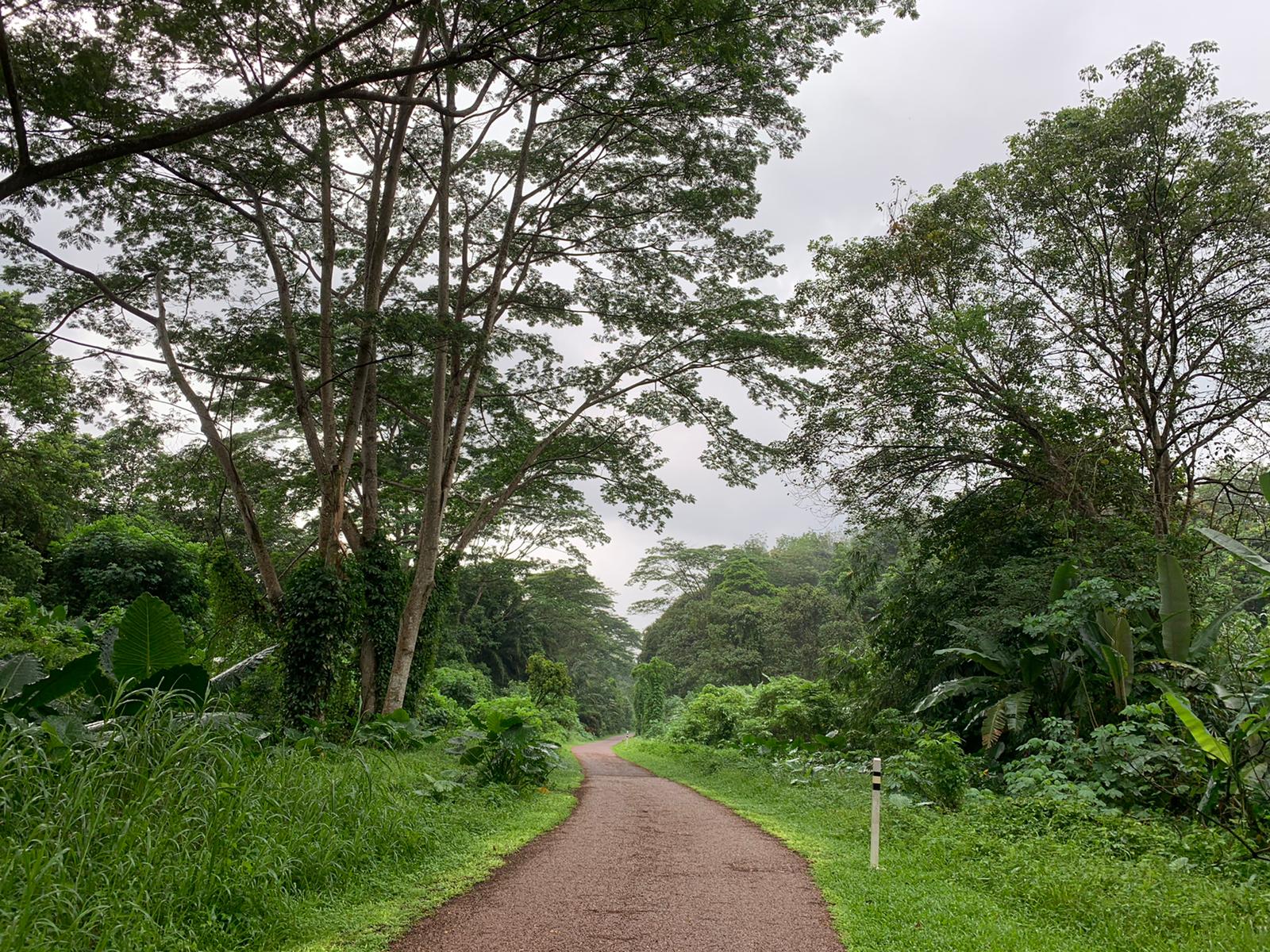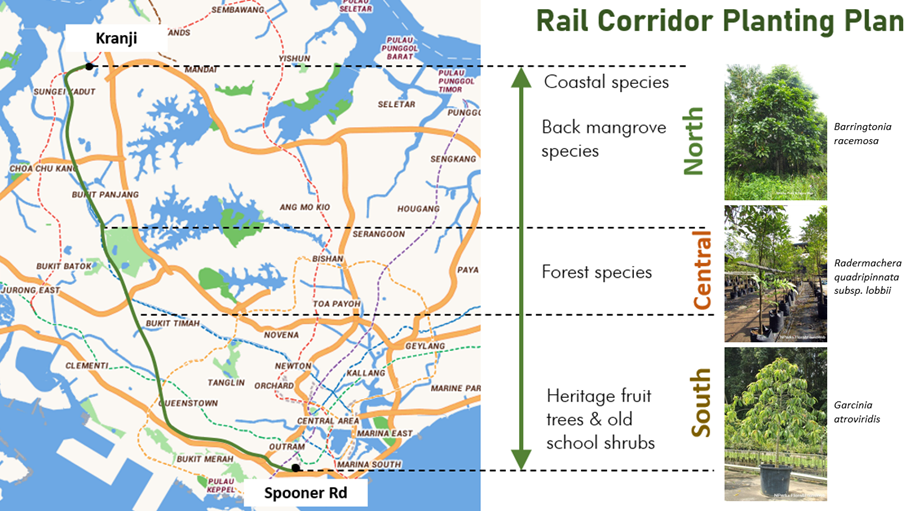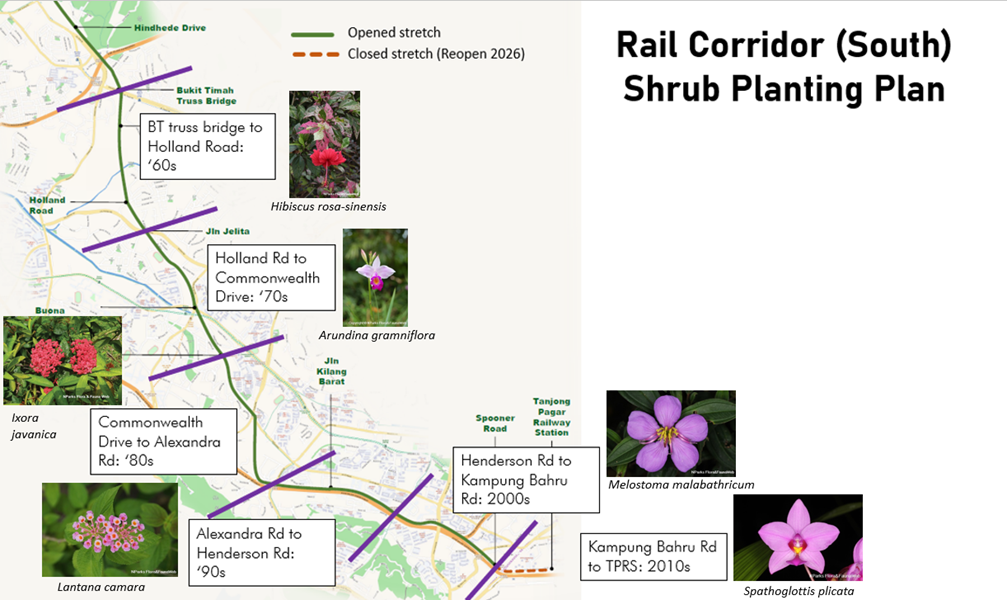Biodiversity & Greenery

Spanning 24 km long, the Rail Corridor is an important ecological corridor that allows wildlife movement between major green spaces and forest habitats such as Bukit Timah Nature and Reserve and Dairy Farm Nature Park. More than 37,000 trees and shrubs were planted along the corridor since 2018 to extend the habitats to facilitate this.
BioBlitz, a biodiversity survey, was conducted on May 2018 to document the fauna species spotted here. This survey recorded sightings of many forest bird species such as the Greater Racket-tailed Drongo (Dicrurus paradiseus), Straw-headed Bulbul (Pycnonotus zeylanicus), and Changeable Hawk-Eagle (Spizaetus cirrhatus). Forest butterfly species such as the Common Birdwing (Troides helena cerberus), and The Archduke (Lexias pardalis dirteana) were also sighted. To find out more and participate in the next BioBlitz, please click here.
Explore the educational resources developed by Friends of Rail Corridor to learn more about the biodiversity of Rail Corridor.
Visit our Flora Fauna Web to browse our online database for plants and animals found in Singapore.
Habitat Enhancement Plans for Rail Corridor
The northern, central, and southern stretches of Rail Corridor are designed to have their own unique character. The north highlights the different habitats you can see along the stretch, from grasslands to back mangroves, whereas central serves as Rail Corridor’s biodiversity core with the planting of forest species, while the south focuses on bringing out the heritage of Rail Corridor through the landscape.
To highlight this, a variety of native tree species have been planted at the different stretches of Rail Corridor. An example would be the Barringtonia racemosa, a critically endangered mangrove associate species that is the food plant for caterpillars of the Atlas Moth (Attacaus atlus), which has been planted at the northern stretch. As Rail Corridor (Central) serves as our biodiversity core, native forest species such as Radermachera quadripinnata subsp. lobbii, a critically endangered species, that serves as a food plant for the Raffles Banded Langer (Presbythis fermoralis fermoralis), has been planted. To pay homage to our heritage in Rail Corridor (South), native heritage fruit trees such as Garcinia atroviridis, a critically endangered species that is more commonly known as Assam Gelugor, has been planted. Its fruits are used as a seasoning in cooking.

Apart from trees, a variety of shrubs at Rail Corridor (South) will be planted to highlight the heritage of Rail Corridor through the landscape. Each section will have shrubs planted that are reminiscent of a particular decade. Park users may journey through time, from the 1960s to 2010s, as they walk along the Rail Corridor.

Some examples of shrub species includes Hibiscus rosa-sinensis (‘60s), Arundina gramniflora (‘70s), Ixora javanica (‘80s), Lantana camara (‘90s), Melostoma malabathricum (2000s), and Spathoglottis plicata (2010s).

